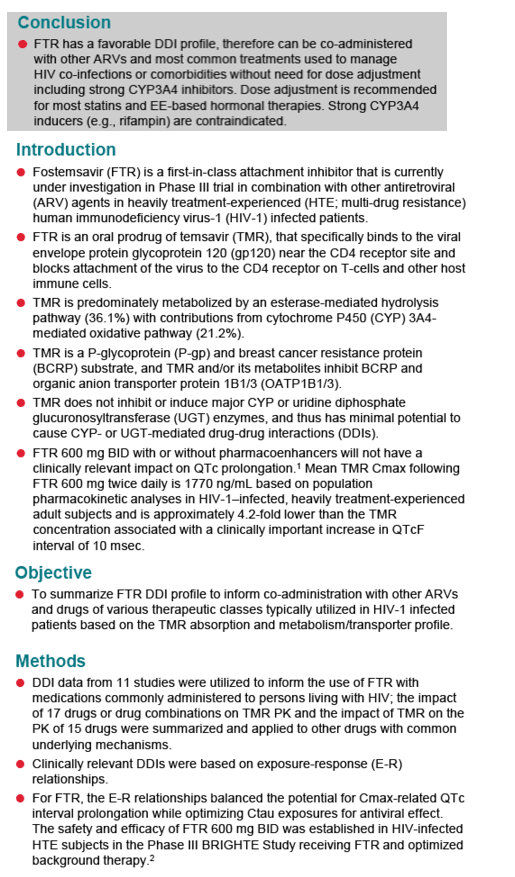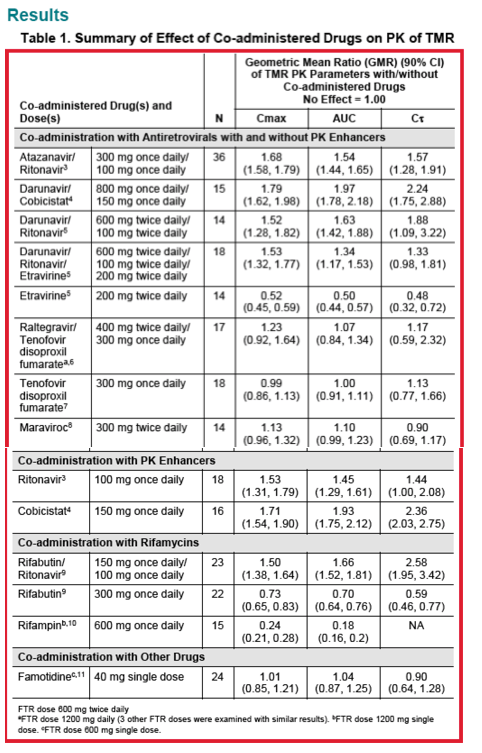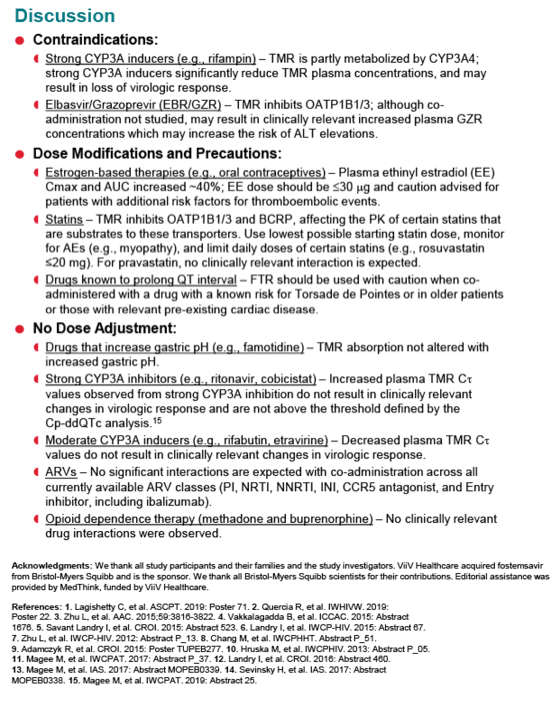 |
 |
 |
| |
Fostemsavir Interaction Study Flags Strong CYP3A
Inducers, Statins, Oral Contraceptives
|
| |
| |
IDWeek, October 2-6, 2019, Washington, DC
Mark Mascolini
Fostemsavir, an HIV attachment inhibitor now being studied for heavily pretreated people, has few meaningful interactions with other antiretrovirals or with medications commonly used for HIV-related comorbidities [1]. There are four exceptions: Dose adjustments are recommended for most statins and for ethinyl estradiol-based hormonal therapies, such as oral contraceptives. Strong CYP3A inducers, such as rifampin, will be contraindicated with fostemsavir, as will the anti-HCV 2-in-1 pill elbasvir/grazoprevir.
Now in a phase 3 trial combined with other antiretrovirals [2], fostemsavir binds to HIV gp120 near the CD4 binding site and thus blocks HIV attachment to the CD4 receptor on T cells. Fostemsavir is an oral prodrug of temsavir, which gets metabolized primarily by an esterase-mediated hydrolysis pathway and partly via a CYP3A4-medicated oxidative pathway. ViiV Healthcare researchers and collaborators collected data from 11 drug-drug interaction studies to inform potential use of fostemsavir with other antiretrovirals and with drugs frequently used by people with HIV infection.
This analysis determined that strong CYP3A inducers like rifampin, as well as the anti-HCV combination agent elbasvir/grazoprevir, are contraindicated with fostemsavir. Because temsavir is partly metabolized by CYP3A4, strong CYP3A inducers significantly lower temsavir plasma concentrations and may impair virologic response to fostemsavir. Temsavir inhibits the transporter OATP1B1/3, and that could lead to higher grazoprevir concentrations and thus to elevated liver enzymes.
Dose modifications may be needed when fostemsavir gets taken with three groups of agents:
1. Estrogen-based therapies such as oral contraceptives (ethinyl estradiol dose should be at or below 30 ug).
2. Statins (temsavir inhibits OATP1B1/3 and BCRP and thus affects pharmacokinetics of certain statins; use lowest possible starting statin dose, monitor for adverse events such as myopathy, and limit daily doses of certain statins, such as rosuvastatin
Analyzed data indicate that no dose adjustment will be needed when fostemsavir is taken with other drugs frequently used by people with HIV:
1. Drugs that increase gastric pH, such as famotidine.
2. Strong CYP3A inhibitors, such as ritonavir and cobicistat.
3. Moderate CYP3A inducers, such as rifabutin and etravirine.
4. Other antiretrovirals including nucleosides, nonnucleosides, protease inhibitors, integrase inhibitor, CCR5 antagonists, or entry inhibitors including the monoclonal antibody ibalizumab, which is licensed for people with multidrug-resistant HIV.
5. Opioid-dependence therapies such as methadone and buprenorphine.
References
1. Moore KP, Mageau AS, Magee M, et al. Fostemsavir drug-drug interaction profile, an attachment inhibitor and oral prodrug of temsavir, for heavily treatment experienced HIV-1 infected patients. IDWeek, October 2-6, 2019, Washington, DC. Abstract 2500.
2. ClinicalTrials.gov. Attachment inhibitor comparison in heavily treatment experienced patients. ClinicalTrials.gov identifier NCT02362503.
-------------------------------------
Fostemsavir Drug-Drug Interaction Profile, an Attachment Inhibitor and Oral Prodrug of Temsavir, for Heavily Treatment-Experienced HIV-1 Infected Patients




|
| |
|
 |
 |
|
|